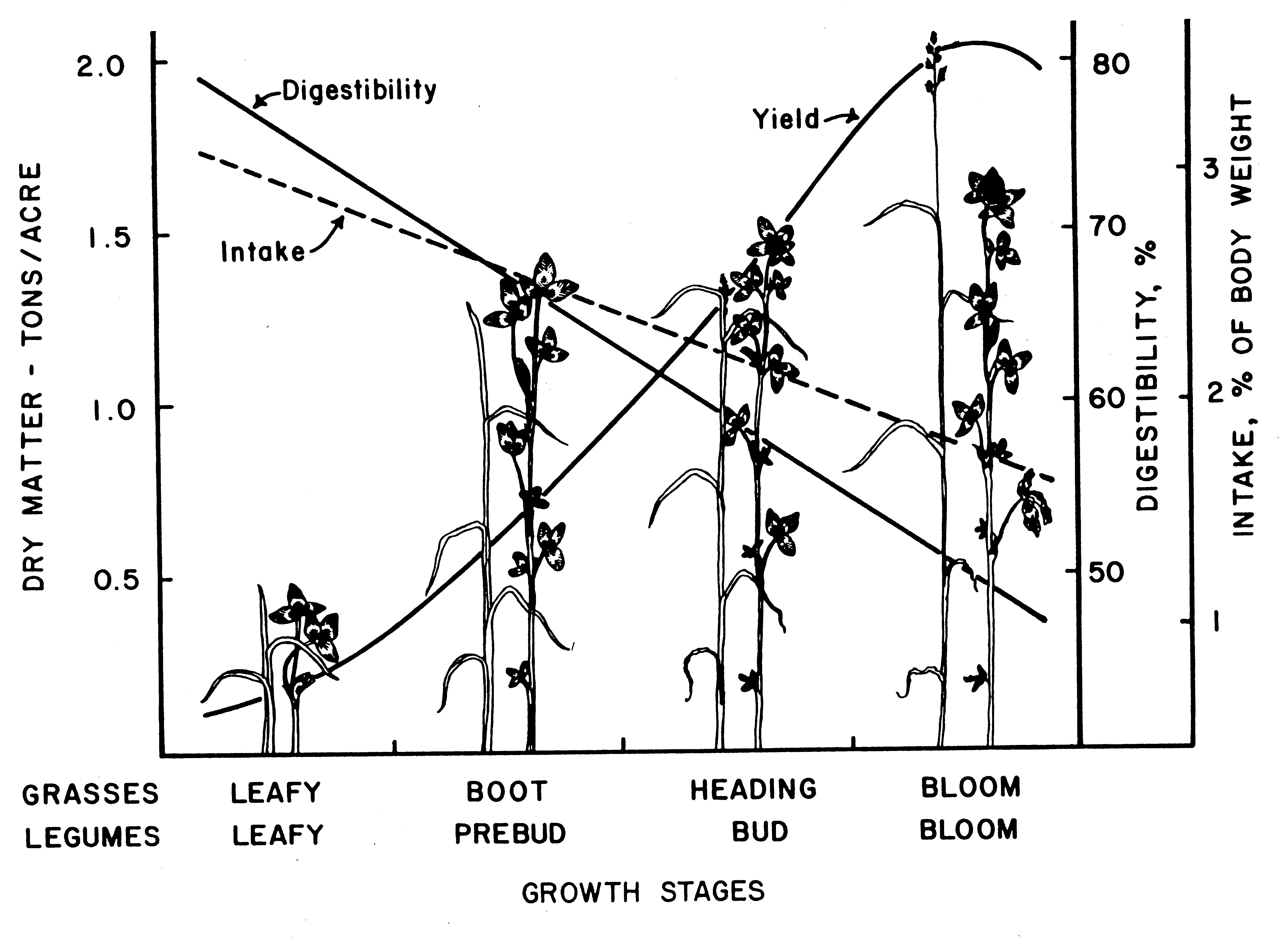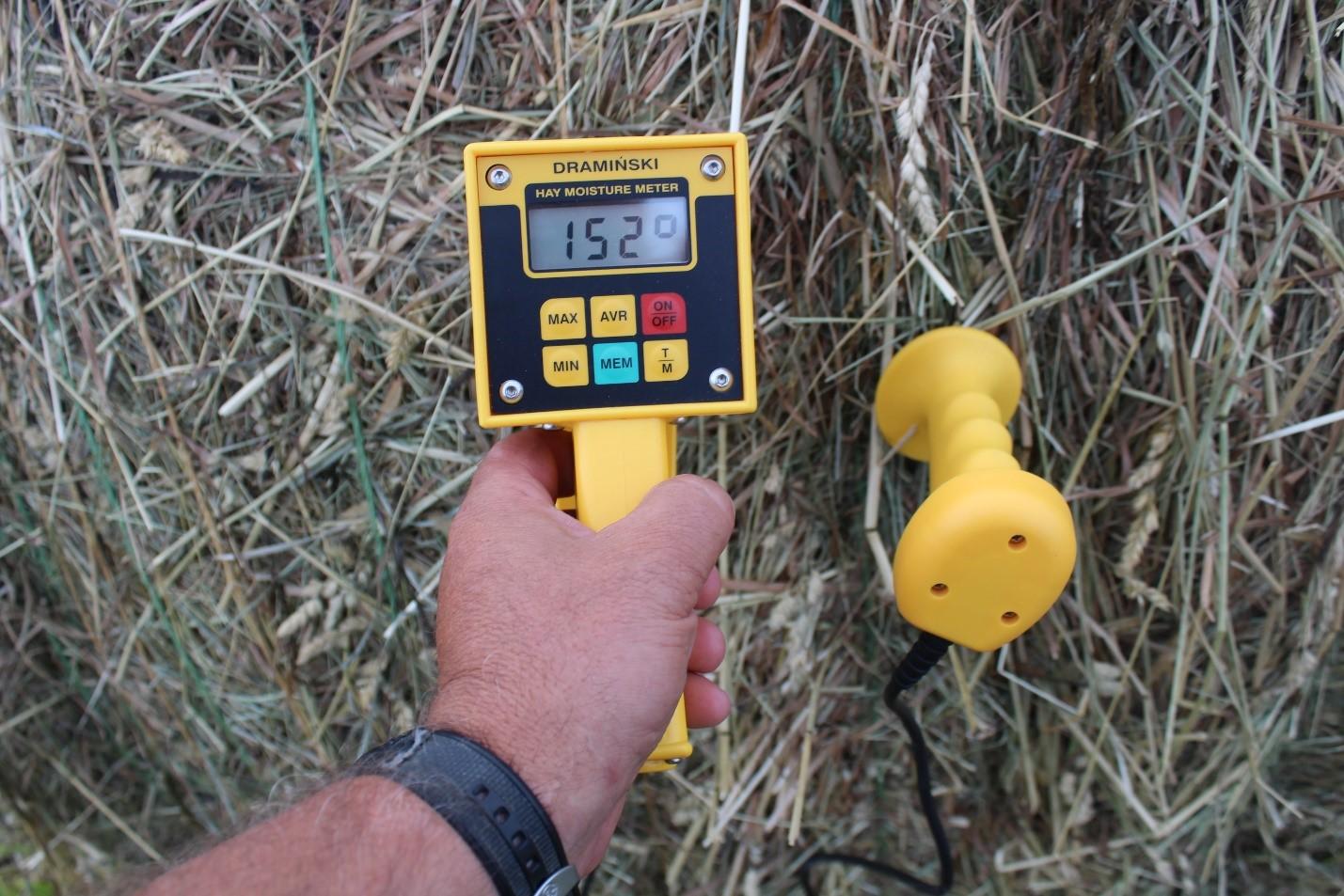Tips to Improve Hay Production this Spring
By Chris Teutsch, UK Research and Education Center at Princeton

Garbage In, Garbage Out: Improving Hay Quality
You have probably heard the expression “garbage in, garbage out." This adage is not only true for hay and silage, but also completely appropriate. Baling or ensiling poor quality forage will NOT improve its nutritional value. How we manage hayfields this spring can have a major impact on both yield and nutritive value. Fertilization and timely cutting are even more critical when we need to refill hay barns after a long winter. The following tips will help you to optimize hay production this spring:
- Fertilize and lime according to soil test. A balanced fertility program is essential for optimizing hay production. Phosphorus, potassium, and lime should be applied according to soil test results. Avoid using “complete” fertilizers such as 10-10-10. These fertilizers commonly over-apply phosphorus and under-apply potash.
- Apply nitrogen early to promote rapid spring growth. Applying 80 lb N/A in mid- to late March will promote early growth in hay meadows, resulting in higher first harvest yields.
- Harvest at the boot stage. The single most important factor impacting forage quality is stage of maturity at harvest. Hayfields should be mowed as soon as the grass reaches the boot stage. By making the first cutting in a timely manner, we will have time to make a leafy second cutting just prior to the summer months.
- Mow early in day. Some studies have shown that sugars tend to be highest in late afternoon, making this the optimal time of day to cut. However, in high rainfall environment like Kentucky, maximizing curing time is the highest priority. Therefore, hay should be mowed in mid- to late morning after the dew has dried off.
- Use mower-conditioner. Conditioning the stems allows for moisture to escape at a faster rate. This shortens curing time and improves your chances of avoiding rain. Conditioning is especially important on first cutting grasses, summer annual grasses, and legumes, all of which tend to have larger stems.
- Set swath on mower-conditioner to the widest possible setting. Maximizing the swath width decreases curing or wilting time by exposing a larger portion of the forage to direct sunlight.
- Rake or ted at 40-50% moisture content. Raking and tedding the forage while it is still pliable helps to reduce leaf loss and maintain forage quality. Once the moisture content is below 40%, leaf loss increases, especially in legumes such as alfalfa and clover.
- Bale at 18-20% moisture. Baling in this moisture range inhibits mold growth and reduces heating. Avoid baling hay that is excessively dry due to high levels of leaf loss and hay that is above 20% moisture due to heating and potential hay fires.
- Store under cover and off the ground. Protecting hay from weathering helps to reduce dry matter losses and maintain forage quality. Much of the weathering damage is a result of the hay bale wicking moisture up from the ground. So, storing hay off the ground can greatly reduce deterioration.
- Do not cut hay fields too close. If not properly adjusted, disc mowers can cut very close to the soil surface, and this can cause significant damage to cool-season grass stands. Do NOT mow perennial cool-season grass stands closer than 3-4 inches.
- Apply nitrogen following the first cutting. Following a timely first harvest, apply 60 lb N/A to stimulate regrowth. With adequate rainfall, a second harvest can be made approximately 30 days after the first harvest.
- Allow hayfields to go into summer with some regrowth. Make sure to allow cool-season hayfields to go into summer with at least 5-6 inches of regrowth. This will shade the crown of the plant, moderating its temperature, and reduce soil moisture losses.
- Apply nitrogen in late summer. As the temperatures moderate in late summer and early fall, apply 60 lb N/A to stimulate fall growth. This growth can be grazed or harvested as needed.
- Allow plants time to replenish carbohydrates in the fall. Make sure to time fall hay cuttings to allow stand to regrow and replenish their carbohydrates prior to winter dormancy.

Featured Video
This month’s featured video is Summer Stockpiling: Thinking Outside the Box. This presentation was given at the 2019 Kentucky Grazing Conferences held in Boone and Christian counties on October 30 and 31.
Featured Upcoming Events
Kentucky Fencing Schools
Coming to a town near you this fall.
More information can be found at https://forages.ca.uky.edu/Events.
Western Kentucky Summer Forage Tour
Where and When: Palmer Farms. Almo, KY, on August 6
Details will be posted at https://forages.ca.uky.edu/Events.
Featured Publication
This month’s featured publication is Quality Hay Production by Garry Lacefield, Jimmy C. Henning, Mike Collins and Larry Swetnam. It can also be accessed by visiting your local extension office.
Fencing Tip
Connect wires in parallel at the end of runs. A good way to increase the ability of an electric fence to carry voltage is to connect all the wires at the beginning and end of runs of multi-wire fence. This allows the multiple strands of high tensile wire to function as one large wire that is capable of carrying higher levels of voltage.
Forage Management Tips
- Plant warm-season grasses once soil temperature has reached 60°F.
- Clip, graze or make hay to prevent seedhead formation on cool-season grass pastures and hayfields.
- Rotate to new pastures when grazed down to 4-5 inches.
- Do NOT mow hayfields closer than 3-4 inches.
- As pasture growth exceeds the needs of grazing livestock, remove some pastures from the rotation and allow growth to accumulate for hay or silage harvest.
- Alternately, as pasture growth exceeds the needs of grazing livestock, remove some pastures from the rotation and allow them to stockpile for late summer grazing.
- Use temporary fencing to subdivide larger pastures.
- Scout pastures for summer annual weeds that have germinated and control with the appropriate herbicide when they are still small.
Categories:
Establishment/Renovation


